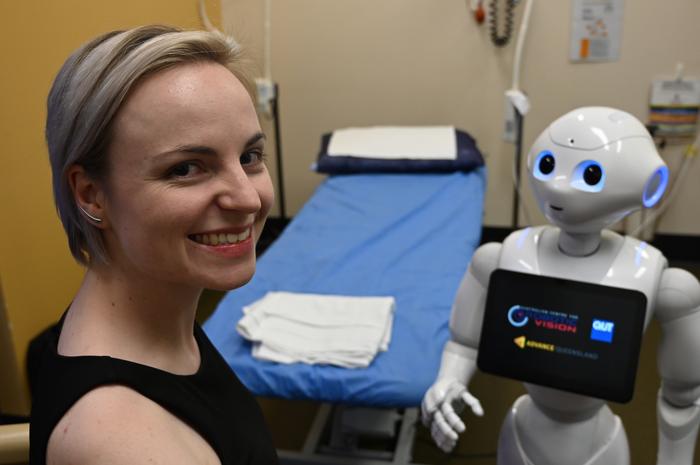Researchers from the Australian Centre for Robotic Vision are calling for large-scale, major trials of social robots in health and wellbeing settings, after an analysis of current experiments found them to be limited and few in number.
A review of trials of social robots – defined as a humanoid or nonhumanoid robot that can communicate or interact with people using verbal or nonverbal communication – found only 27 of significance.
Many of them lacked a follow-up period; targeted only a small sample group of fewer than participants; and were limited to child health, autism spectrum disorder (ASD) and older adults. None of the trials to date have involved adolescents.
Now is the time for researchers and robots to up their ambitions and focus on weightier issues, including depression, drug and alcohol abuse, and eating disorders, the researchers say.
“It remains surprising that health-related interventions by social robots do not appear to have been trialled in other problem domains or in adolescents or young adults. Such trials would be timely and important,” the centre’s Dr Nicole Robinson wrote in a recent paper, co-authored with colleagues from QUT and published in Journal of Medical Internet Research.

Although the trials to date have been limited in number and size, results have been generally positive.
“It is encouraging that all of the reviewed papers provided some evidence of positive effects from an intervention using a social robot, even though several found that some measures showed no differential effects or favoured alternate treatments,” Robinson told Computerworld.
“The beauty of social robot interventions is that they could help to side-step potential negative effects of face-to-face therapy with a human health practitioner such as perceived judgement or stigma,” she added.
There were some negatives – in a small number of studies social robots increased anxiety or worsened symptoms compared with a human therapist, but this could have been due to other factors.
Robinson – who led Australia’s first study into the positive impact of social robot interventions on eating habits – says as robots improve, it will lead to what she calls a “therapeutic alliance” between the bots and humans. However, human healthcare professionals’ jobs are safe, she adds.
“Advances of this kind may be seen by some therapists as a threat…Our research is not about replacing healthcare professionals, but identifying treatment gaps where social robots can effectively assist by engaging patients to discuss sensitive topics and identify problems that may require the attention of a health practitioner,” Robinson said.
In 2018, the robotic vision centre’s social robotics team rolled out Pepper robots to Townsville Hospital to act as a concierge in the hospital’s short stay unit. Queensland Health earlier this year announced it was continuing its experimentation with robot assistants, rolling out TESA (The eHealth Service Assistant) robots to hospitals across the state.

The Pepper robots are now installed at a QUT Health Clinic on its Kelvin Grove Campus for a three month trial which will see them deliver a brief health assessment and discuss issues around physical activity, dietary intake, alcohol use and smoking.
Greater use of social and companion robots by healthcare providers is touted as a “significant opportunity” for Australia in the Robotic Vision ARC’s Robotics Roadmap for Australia.

